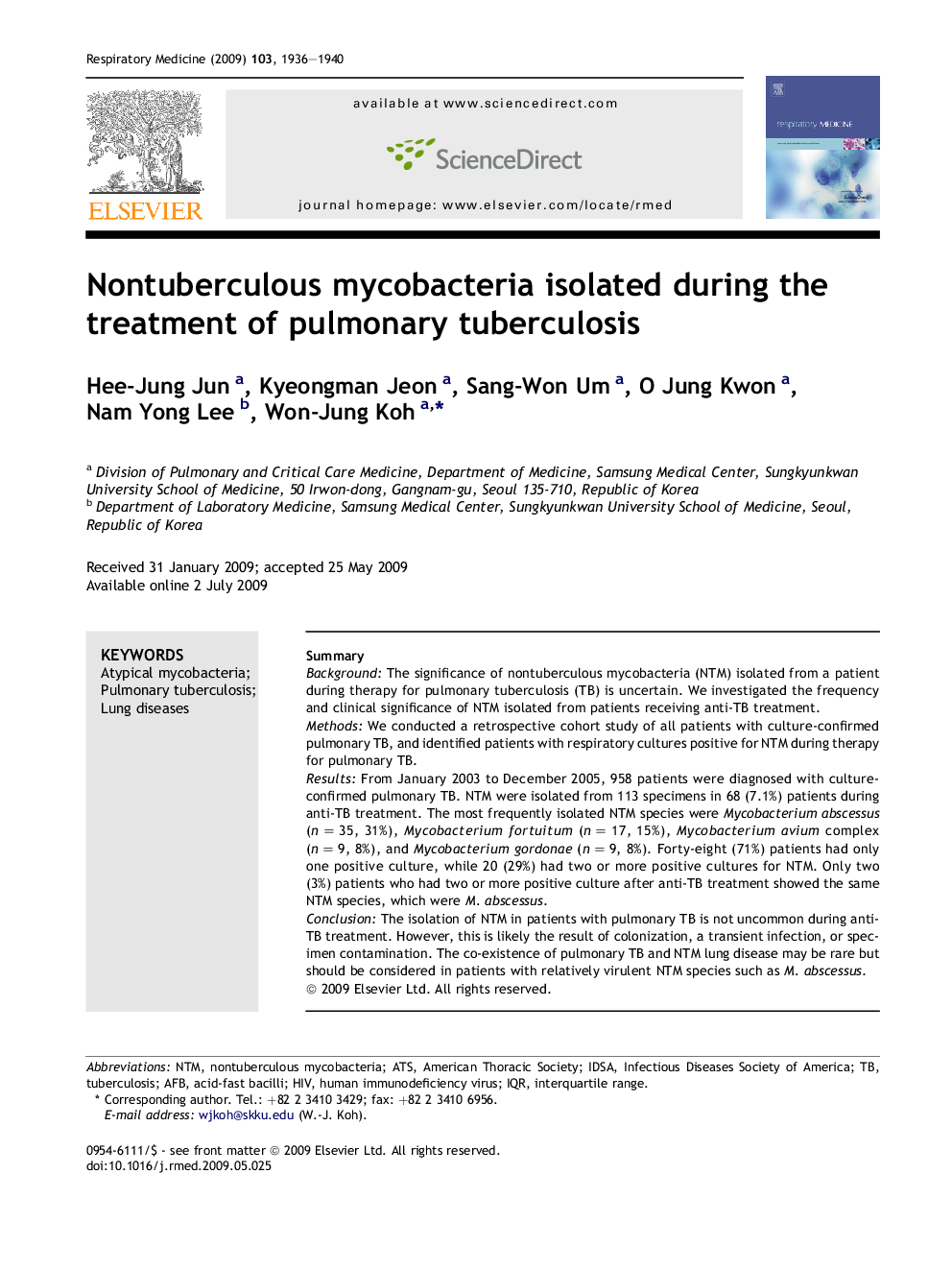| Article ID | Journal | Published Year | Pages | File Type |
|---|---|---|---|---|
| 4210827 | Respiratory Medicine | 2009 | 5 Pages |
SummaryBackgroundThe significance of nontuberculous mycobacteria (NTM) isolated from a patient during therapy for pulmonary tuberculosis (TB) is uncertain. We investigated the frequency and clinical significance of NTM isolated from patients receiving anti-TB treatment.MethodsWe conducted a retrospective cohort study of all patients with culture-confirmed pulmonary TB, and identified patients with respiratory cultures positive for NTM during therapy for pulmonary TB.ResultsFrom January 2003 to December 2005, 958 patients were diagnosed with culture-confirmed pulmonary TB. NTM were isolated from 113 specimens in 68 (7.1%) patients during anti-TB treatment. The most frequently isolated NTM species were Mycobacterium abscessus (n = 35, 31%), Mycobacterium fortuitum (n = 17, 15%), Mycobacterium avium complex (n = 9, 8%), and Mycobacterium gordonae (n = 9, 8%). Forty-eight (71%) patients had only one positive culture, while 20 (29%) had two or more positive cultures for NTM. Only two (3%) patients who had two or more positive culture after anti-TB treatment showed the same NTM species, which were M. abscessus.ConclusionThe isolation of NTM in patients with pulmonary TB is not uncommon during anti-TB treatment. However, this is likely the result of colonization, a transient infection, or specimen contamination. The co-existence of pulmonary TB and NTM lung disease may be rare but should be considered in patients with relatively virulent NTM species such as M. abscessus.
